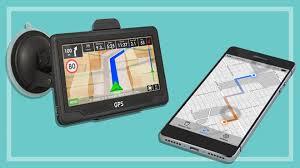
“Navigation? Simple. There’s an app for that.”
I have my own ‘app’ in the form of an enlarged, easy to read road atlas. It is far better than the rude interruptions from the voice of the sat-nav in the middle of a conversation and making me lose my drift. It’s more reliable than the sat-nav, as well.
We used a sat-nav, or whatever it is on my husband’s phone when we were touring in our caravan last summer. Travelling from The Machars in Dumfries & Galloway to Maybole in Ayrshire, I wasn’t looking forward to the A77 and A78 which are always busy at any time of day. I wasn’t driving, but it’s still worrying as a passenger, ahem, back seat driver. I was saved the anxiety by the route the sat-nav chose to take. Miles and miles of single-track, harem scarem road, cutting through the lesser known depths of Galloway Forest Park, eventually releasing us into the freedom of rural Ayrshire. Not the best road for towing a caravan and we felt relieved to be unscathed, and alone. In all those miles we hadn’t encountered another vehicle. Drivers were either wise to avoid that way, or they knew we were out. It was a bad experience which made us wary of the sat-nav and we kept to the A roads after that.
On a visit to the Outer Hebrides – no caravan, just car and cottages – we traveled north from touring the Uists to base ourselves in the Isle of Harris to explore Harris and Lewis. We were in a hilly area. The highest mountain in the Outer Hebrides was near, The Clisham at 799 metres, standing majestically over our cottage. Out one day for a drive and a look around, I was navigating using an OS map. We were aiming for the west coast. I was struggling with reading the tiny details on the map and soon thought we’d – I’d – gone wrong somewhere and couldn’t find any landmarks matching the map. We were on the cliff-edge road of a mountain and I was so scared that I couldn’t speak. I was literally stunned into silence.There was relief eventually when we found ourselves descending towards a small beach, a couple of cars and a handful of people. With map in hand, I explained that we’d become lost and sought their help. This lovely family came to our aid, turned the map the right way up, and pointed to where we were. They set us back on the right track, which involved a return journey back up the mountain road, but at least we were on the inside lane this time. I hope they didn’t ridicule us too much when they went home to Scandinavia. Oops. Don’t trust me with a hard to read OS map in the Hebrides, or anywhere in the world.
When I was in junior school, probably aged nine or ten, we were tasked with doing a project on something of our own choice. Girls favoured pop music or fashion. Boys chose cars or the armed forces. There were other things picked, but looking back, how gender categorised we all must have been. Of all the things in the world, I picked compasses. This was because there was a picture of a mariner’s compass on the front of a world atlas at home, and it fascinated me. The project didn’t get beyond two items, the mariner’s compass and a Girl Guides one. Good drawings, though, even if I say so myself. We’ve come a long way since navigating by a compass was all we had, especially at sea. The digital era has taken us over in the name of progress.
I’ll stick with the easy to read road atlas, even if it does weigh a ton on my knee in the car. I’m about to navigate us to Scotland then to Warwickshire, so I’ll be missing, but hopefully not lost. Back soon.
NavigationLost in South Harris
When the map was upside down
And we got mixed up.
Study the road map
Give confident directions
And have a Plan B.
Work out the distance,
Choose where to make cmfort stops
To break the journey.
Rude interruption,
Strict, assertive instructions.
Who needs a sat-nav?
PMW 2024
Thanks for reading, Pam x
Email ThisBlogThis!Share to TwitterShare to Facebook